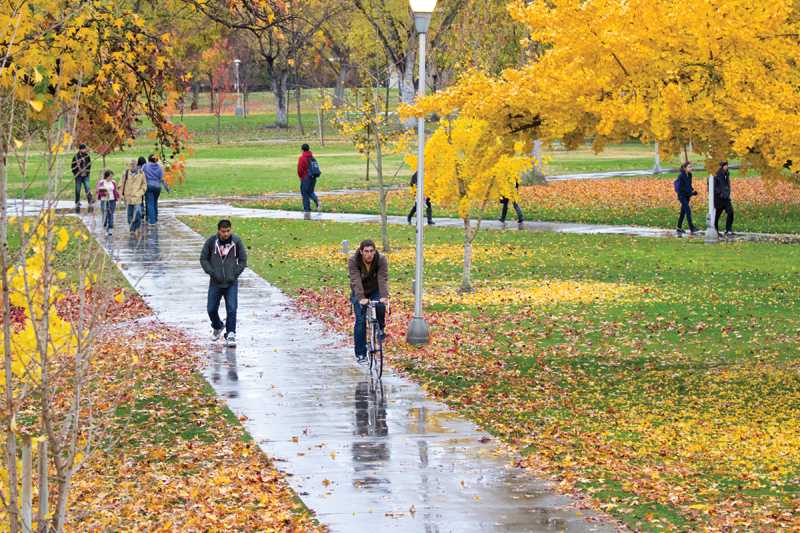
For some, as the clouds cover the skies with gloom and showers bathe our city, this time of year brings about cozy feelings.
However, for others, it may be a depressing time which some describe as having the winter blues.
The term used to describe the winter blues is Seasonal Affective Disorder or S.A.D. It is a type of depression that occurs during the same time each year, according to the medical website WebMD. This may commonly affect people in particular areas due to the lack of sunlight.
S.A.D. is typically during the fall and winter months when the days are shorter and we experience less sunlight. However, S.A.D. may occur during the summer seasons as well describes MedicineNet.com
Matthew Bird, a graduate student, says he has heard of the disorder.
“If it is what I think it is,” Bird said, “it affects people in areas where they don’t get a lot of sunlight.”
According to an article on MedicineNet.com, written by Dr. Roxanne Dryden-Edwards, “statistics on seasonal affective disorder in the United States include that this disorder occurs in about 5% of adults, with up to 20% of people having some symptoms of the condition but not sufficient enough to meet diagnostic criteria for the disorder.”
S.A.D. is four times more common in women than men, reports the medicine site. The disorder does not discriminate as it can affect people of all ages but is commonly found in young adults.
“The average age of people when they first develop this illness is 23 years of age,” states MedicineNet.com
Though there isn’t an actual test to determine whether one is suffering from S.A.D., symptoms that point to having the disorder can be helpful in determining what the issue may be, points out MedicineNet.
Symptoms of S.A.D. include fatigue, tiredness, trouble concentrating, irritability, depression, body aches, loss of sex drive, poor sleep, decreased activity level and overeating which leads to an increase in weight.
During the summer months symptoms are insomnia, poor appetite and weight loss, as well as the symptoms felt during the fall and winter months.
“In severe instances, seasonal affective disorder can be associated with thoughts of suicide,” notes MedicineNet.
Bird says he used to feel a change is his mood according to the season but has since found positivity in it.
“Whenever it rains or there’s overcast I think of snow in the mountains and that makes me happy,” Bird said.
“I think of snow in the mountains which then turns into runoff and water in our lakes in the summer. And I like to ski and snowboard and I like wakeboard and go boarding. So whenever it’s overcast I’m happy because I know it means there’s going to be more snow in the mountains.”
For Bird, as a child and teenager in high school, he said he would definitely become depressed. Now as an adult that has changed, although during the winter he feels a change and has a difficult time waking-up when the sun is not out.
“I kind of wake up according to the sun. So if I have to wake up before the sun, it’s tough for me,” Bird said.
“I definitely have a harder time getting up, more based on the lack of sunlight,” added Bird. “In the summer I don’t have as hard of a time getting up.”
The disorder “seems to develop from inadequate bright light during the winter months,” states MedicineNet.com. “Researchers have found that bright light changes the chemicals in the brain.”
Graduate student Daniel Vasile feels differently. The fall season we are experiencing now does not have an affect on him.
“I’m usually very constant,” Vasile said about his sleeping pattern. “I go to sleep very late so I have to sleep at least eight or 10 hours.”
For those who live with S.A.D., treatment comes in different forms depending on the extent of the disorder. Antidepressants may be prescribed if one becomes depressed.
Another treatment plan or option as described on MedicineNet is exposure to bright light, which is also known as phototherapy.




